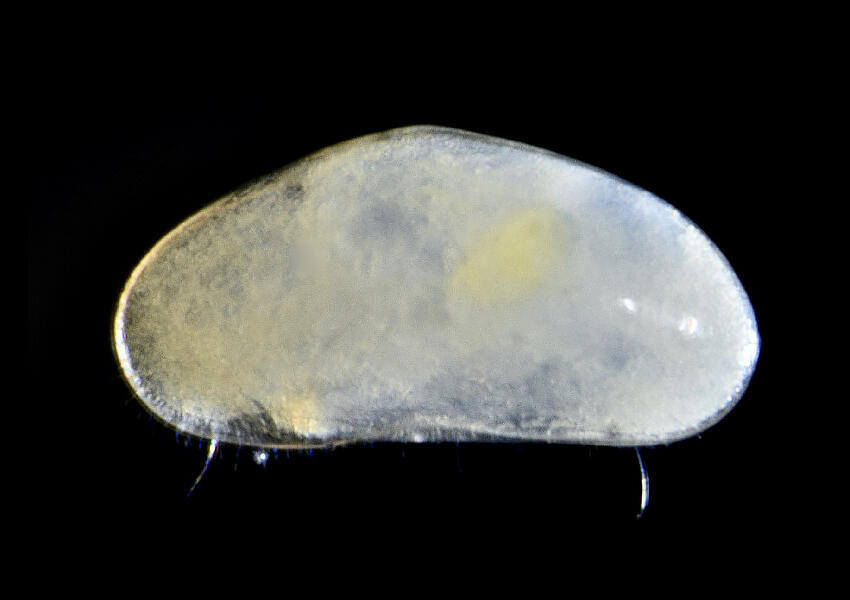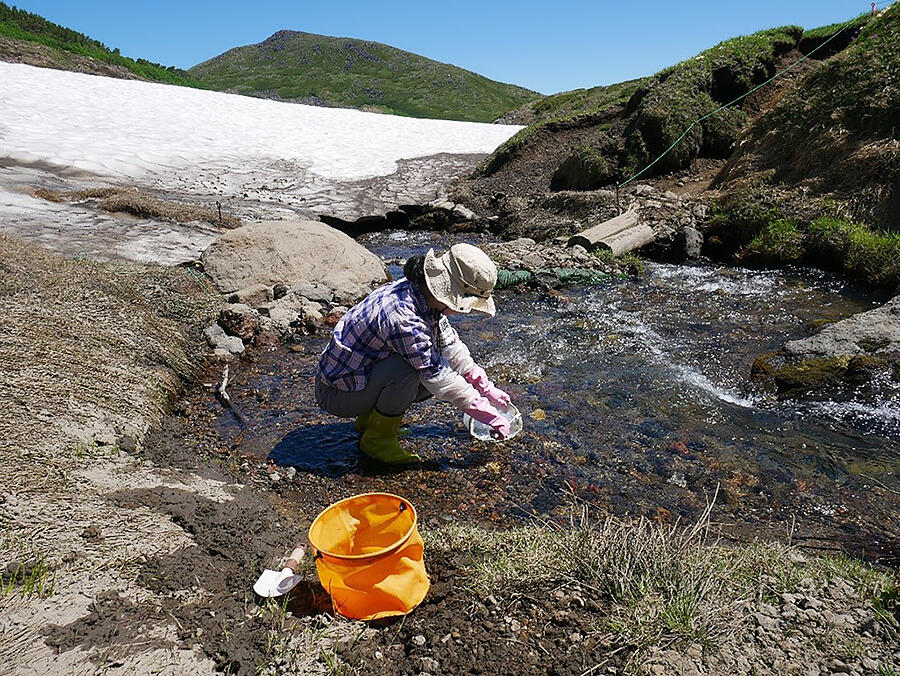
(Provided by Mizuho Munakata, Hokkaido University)
A research group comprised of graduate student Mizuho Munakata and instructor Keiichi Kakui of the Graduate School of Science, Hokkaido University, and Hayato Tanaka, animal expert at the Tokyo Sea Life Park, have discovered a new species of freshwater ostracod in an alpine river in the Taisetsuzan mountain range in Hokkaido (The national park it is located in is known as Daisetsuzan). The discovery was published in the online edition of Zoosystematics and Evolution.
Numerous unique organisms that are adapted to harsh environments, as well as relic species from the Ice Age, can be found in alpine regions throughout the world, and many of those organisms are found only in that particular alpine zone. The cypridoidean ostracod is a tiny crustacean with two shells on either side of its body, similar to a bivalve. They inhabit a wide variety of aquatic environments, from saltwater to freshwater, with nearly 100 freshwater and saltwater species reported to date in Japan alone. However, none had yet been reported in alpine regions.
The group, led by Munakata, carried out two collection surveys in August 2020 and July 2021 during which they filtered sand from the beds of rivers and lakes in Daisetsuzan National Park, located in central Hokkaido. From those samples, the group found one species of the genus Cavernocypris from the Hokkai-sawa steam, a stream that flows from ground water and snow melt at an altitude of approximately 1,850 meters within the Taisetsuzan range. They then subjected the organism to morphological observations using optical and scanning electron microscopes, partial sequencing of several genes, and life cycle estimation through isolated breeding.
The research showed that the organism was an undocumented species due to morphological characteristics unlike any known species. Accordingly, the group reported it as a new species with the name Cavernocypris hokkaiensis (Japanese name: Shibaredoukutsu Kaimijinko, where the term "shibare" comes from the word for freezing cold, or Shibareru, in the local dialect).
Furthermore, the team carried out partial sequencing of multiple genes to lay the groundwork for future research using DNA sequences. The fact that only female specimens were collected, and that a partial sequence of the 16Sr RNA gene of an endosymbiotic bacterium (a type of Cardinium) known to cause parthenogenesis in arthropods was also detected, suggests that Cavernocypris hokkaiensis is a parthenogenetic organism in which the females reproduce on their own. Further field surveys and captive observations demonstrated that the new species was only found in the Hokkai-sawa stream. Only a few individuals were collected, but none showed any sign of molting for over five months of captivity (whereas cypridoidean ostracods normally molt eight times before reaching adulthood). This suggests the species is unique to the Taisetsuzan range, that they have a low population density, and that they require a long period of time to mature.

(Provided by Mizuho Munakata, Hokkaido University)
The Cavernocypris hokkaiensis collected for this research were found in cold water at temperatures between two and six degrees Celsius, in an alpine stream that at first glance appears to support no life whatsoever. The question remains, how did a type of cpyridoidean ostracod, an organism with limited ability to spread, make it up to such a harsh and isolated environment. Perhaps they follow a distribution in exclusively cold climates, much like alpine plants that utilize high mountainous areas as a refuge? This and many other questions remain unanswered as of yet. Moving forward, the group hopes to carry out further research using collection surveys in other alpine regions of Japan, and DNA sequencing, to identify more unidentified species in order to understand the origins of alpine species and their history of distribution.
This article has been translated by JST with permission from The Science News Ltd.(https://sci-news.co.jp/). Unauthorized reproduction of the article and photographs is prohibited.




